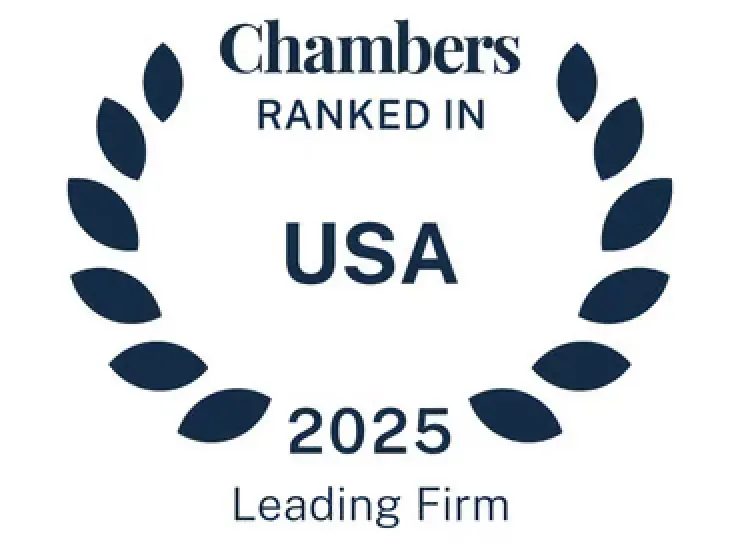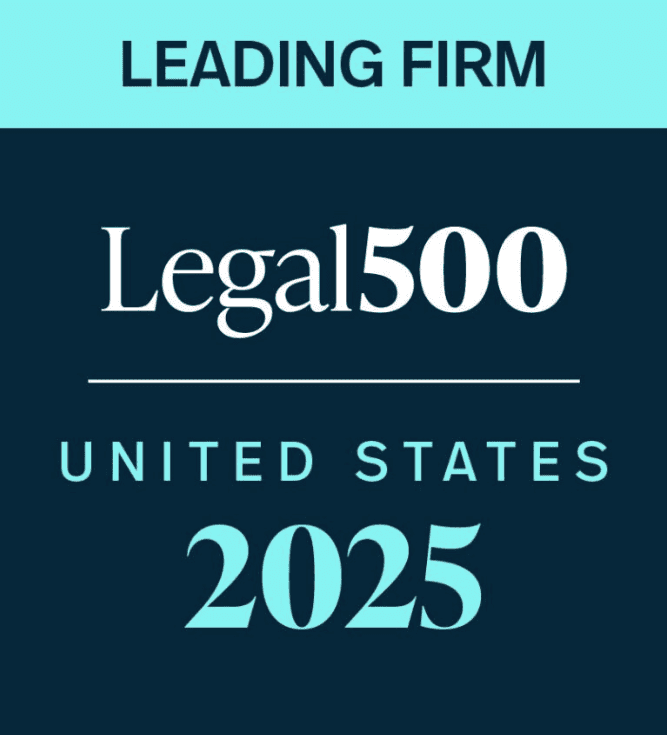



On January 15, 2025, the Employee Benefits Security Administration (EBSA) published a final rule updating its Voluntary Fiduciary Correction (VFC) Program (the “Updated VFC Program”), based on proposed rules issued in November of 2022. The Updated VFC Program will take effect on March 17, 2025.
The most significant changes to the VFC under the Updated VFC Program are the addition of two new self-correction features for common plan failures:
Other changes under the revised program include (i) alternative corrections for prohibited transactions involving certain plan loans made at below-market interest rates, (ii) corrections for purchase and sale transactions involving the plan and parties in interest, and certain clarifying changes. This article focuses on the new self-correction opportunities.
VFC Application Process.
Under the prior version of VFC (effective through March 16, 2025), plan fiduciaries were permitted to correct certain fiduciary breach violations and prohibited transactions under the Employee Retirement Income Security Act (ERISA) by applying to EBSA for relief (the “Application Process”). VFC specifies nineteen categories of transactions that are eligible for correction. Plan sponsors may submit proposed corrections for these transactions to EBSA and, if the plan sponsor’s correction is approved, EBSA will issue a “no-action” letter to the employer. The no-action letter states that EBSA will not take any civil enforcement action, including legal action and assessment of civil penalties, against the plan sponsor with respect to the corrected transaction.
Under the Updated VFC Program, the nineteen transactions remain, but a new self-correction component (SCC) (under which an application is not required) streamlines the process for two transactions. Under SCC, the submitter simply files a notice on the EBSA website, which is acknowledged by EBSA. (The requirements of the notice are explained in detail, below.) A no- action letter is not issued in this instance, however, the submitter receives the same benefits it would have received if EBSA has issued a no-action letter.
Self-Correction of Late Participant Contributions.
According to EBSA’s overview of the changes to VFC, late deposit of participant elective deferral contributions and loan repayments are the most frequently corrected VFC transaction. SCC is intended to streamline the process for correcting this defect, which will make it easier and less expensive to use. This should have the effect of encouraging greater compliance in this regard.
Eligibility. SCC is available to plans of any size, provided the plan, plan sponsor, or other plan officials are not “under investigation” as defined under VFC. One is generally under investigation if it is being investigated by EBSA; under investigation or examination by another federal, state or local agency, or is under a PBGC or IRS Employee Plans Division examination. Additionally, the following conditions must be satisfied:
Self-Correction Procedures for Late Participant Contributions. As is the case with the Application Process, SCC requires the payment of the Late Participant Contributions to the plan (principal amounts), plus a contribution to the plan for lost earnings (i.e., the approximate amount that would have been earned by the plan on the Late Participant Contributions if they had been contributed timely). In addition, SCC requires (i) calculation of lost earnings using a standardized “loss date,” (ii) the online filing of a SCC notice, (iii) completion of a “Record Retention Checklist,” and (iv) execution of a Penalty of Perjury Statement. Each of these procedures is described in more detail below:
It should be noted that:
Even though those who choose to self-correct under SCC do not receive a no-action letter, self-correction allows plan sponsors to avoid the imposition of civil monetary penalties and EBSA civil enforcement action. There is currently no limit on how often a plan sponsor may submit transactions under SCC; however, EBSA has stated that it will monitor the usage of the program. However, EBSA says in the preamble to the new VFC rule that whether frequent filers will trigger communications from EBSA or initiate an investigation is dependent on the facts and circumstances of the particular case.
Self-Correction of Certain Participant Loan Failures under EPCRS
In the past, to use the VFC for correction of participant loan failures the loan had to be first corrected under the IRS’ Voluntary Correction Program (the “VCP,” a component program under EPCRS). However, in 2019 the IRS allowed certain participant loan failures to be self-corrected under EPCRS without filing an application under VCP. Additionally, the IRS was directed under SECURE 2.0 (signed into law on December 29, 2022) to update EPCRS within two years to permit self-correction of “eligible inadvertent failures” (defined below), including participant loan failures attributable to such failures. The IRS has not yet updated EPCRS in this regard. However, interim IRS guidance in Notice 2023-43 now permits participant loan failures to be self-corrected if they qualify as “eligible inadvertent failures.
Under SECURE 2.0 and Notice 2023-43, an eligible inadvertent failure is a failure that occurs despite the existence of established practices and procedures designed to keep the plan in compliance with qualification requirements. It does not include any egregious failures or those relating to the diversion or misuse of plan assets, or failures that are directly or indirectly related to an abusive tax avoidance transaction.
Under the Updated VFC Program, SCC is now available for participant loans that have been self-corrected under EPCRS, as modified by Notice 2023-43. SCC can also be used to correct participant loan failures that do not comply with the maximum loan amount limitation, level amortization or the maximum repayment period. Additionally, SCC is available to correct loans that have been defaulted due to a failure to withhold repayments from a participant’s wages, loans made in the absence of required spousal consent, and loans exceeding the number of loans allowed under plan terms, provided the loan has been corrected under EPCRS.
The self-correction procedures for participant loans are similar to those for the self-correction of Late Participant Contributions described above, except that completion of a checklist is not required. Note that SCC is available even if the plan or the self-corrector is under investigation, so long as the self-corrector is eligible under EPCRS to correct the participant loan failure as an eligible inadvertent failure. IRS Notice 2023-43 permits a participant loan failure to be self-corrected as an eligible inadvertent failure even if the employer or plan is under examination by the IRS, provided the sponsor had demonstrated a specific commitment to implement self-correction before the examination, or during the examination, if the loan failure is considered insignificant under the factors set forth in EPCRS. But for the exception, being under examination by the IRS would disqualify the failure from VFC as being under investigation.
Prohibited Transaction Exemption 2002-51.
In connection with the Updated VFC Program, EBSA has amended Prohibited Transaction Exemption 2002-51 (the “PTE”) to expand excise tax relief to certain transactions corrected under SCC. While the summary of the PTE states it is being amended to provide excise tax relief for transactions that are corrected under SCC, in reality the PTE only covers Late Participant Contributions corrected under the SCC.
To take advantage of the excise tax relief, under the PTE, self-correctors must first go through SCC and receive the Acknowledgement. EBSA eliminated the requirement to provide notice to interested parties for eligible self-correctors who wish to take advantage of the PTE. However, in lieu of providing that notice, the self-corrector must pay to the plan any excise tax due under Code section 4975. The self-corrector must complete and retain an IRS Form 5330 reflecting the calculation of the excise tax and proof of payment to the plan. This information must be provided to the ERISA plan administrator. The payment must be allocated among all the plan participants and beneficiaries in the same manner as provided under the plan with respect to plan earnings. (It is not entirely clear how this allocation is to be made for plans that do not maintain pooled assets, such as a defined contribution plan with participant self-direction of the investment of their account.) EBSA has also removed the restriction that excise tax relief is available only to applicants who had not taken advantage of the relief for a similar type of transaction within the last three years.
Conclusion
The Updated VFC Program, which provides for the ability to self-correct late remittances of elective deferrals and participant loan repayments, and inadvertent participant loan failures, streamlines VFC and thereby facilitates correction for these transactions. While there are still significant data and document retention requirements, they are not overly burdensome when compared to the value of the compliance relief, which now can be obtained without the significant costs associated with filing formal VFC and/or IRS applications.
The revisions to VFC highlight the need for plan fiduciaries and their advisors to maintain practices and procedures reasonably designed to facilitate compliance with ERISA, through early identification and prompt correction of compliance defects. (Note that the maintenance of such practices and procedures is already an eligibility condition for use of self-correction under the IRS’ Self Correction Program.) This, in turn, will facilitate the ability to take advantage of SCC under the Updated VFC Program.
We are hopeful that if SCC is successful, and we think it will be, this might prompt the DOL to expand self-correction to other VFC transactions. If you have questions regarding the Updated VFC Program, please contact us.
Date: Tuesday, February 25, 2025
Time: 10:00 – 10:45 a.m. PT
Cost: Complimentary
Presenter: Mary Powell
On January 28, 2025, President Trump issued an Executive Order titled “PROTECTING CHILDREN FROM CHEMICAL AND SURGICAL MUTILATION.” The Order applies to certain gender transition services for children under the age of 19. It states that the federal government “will not fund, sponsor, promote, assist, or support the so-called ‘transition’ of a child from one sex to another, and it will rigorously enforce all laws that prohibit or limit these destructive and life-altering procedures.”
For most employers, we do not believe the Order requires any immediate action involving their health plans. However, the Order has practical implications that should be considered.
The following will be discussed:
MCLE Credit: This program is eligible for Continuing Legal Education (CLE) credit. Please contact Franchesca Grande (fgrande@truckerhuss.com) to receive a CLE certificate of completion.
Questions or Comments: Contact: Webinars@truckerhuss.com
SHRM: This program is valid for 0.75 hours of PDC for SHRM-CP® or SHRM-SCP®.
HRCI: This program has been approved for 0.75 (HR (General)) recertification credit hours toward aPHR™, aPHRi™, PHR®, PHRca®, SPHR®, GPHR®, PHRi™ and SPHRi™ recertification through the HR Certification Institute.
HR Certification Institute’s® (www.HRCI.org) official seal confirms that Trucker Huss, APC meets the criteria for pre-approved recertification credit(s) for any of HRCI’s eight credentials, including SPHR® and PHR®.
On May 28, 2025, the U.S. Department of Labor Employee Benefits Security Administration (EBSA) released its first compliance assistance bulletin under the new presidential administration, Compliance Assistance Release No. 2025-01 (the “New Guidance”), announcing and memorializing EBSA’s revocation of its 2022 guidance cautioning against 401(k) plan investments in cryptocurrencies (Compliance Assistance Release No. 2022-01 (the “Prior Guidance”).
The Prior Guidance was issued by EBSA during the last presidential administration in response to a growing number of firms marketing cryptocurrencies as potential 401(k) plan investment options. Citing concerns that cryptocurrencies may have volatile returns, are subject to an evolving regulatory environment, present unique challenges for participants in making informed investment decisions, and have unique custodial, recordkeeping and valuation concerns, EBSA cautioned plan fiduciaries to exercise “extreme care” before considering adding a cryptocurrency to a 401(k) plan investment menu. Notably, in light of EBSA’s concerns, the Prior Guidance warned plan fiduciaries that EBSA expected to conduct an investigative program aimed at plans offering participant investments in cryptocurrencies and related products. More specifically, EBSA informed 401(k) plan investment fiduciaries permitting cryptocurrency investments that they “should expect to be questioned about how they can square their actions with their duties of prudence and loyalty in light of the [associated] risks . . .” This resulted in an immediate and significant chilling effect on pursuing cryptocurrency offerings in 401(k) Plans.
It comes as little surprise that the new presidential administration is a proponent of cryptocurrency, with Vice President Vance announcing the same day as the release of the New Guidance that “crypto finally has a champion and an ally in the White House… crypto and digital assets… are part of the mainstream economy, and are here to stay.” But what does the New Guidance mean for plan fiduciaries and the prudent analysis they must undertake in considering whether cryptocurrencies are an appropriate 401(k) plan investment options?
The New Guidance focuses on the reference to “extreme care” in the Prior Guidance as a rationale for its revocation, stating that “extreme care” is not a standard found in ERISA, and differs from ordinary fiduciary principles thereunder. Under ERISA, the fiduciary principles describing standards of care are the duties of loyalty and prudence. Specifically, ERISA’s duty of loyalty provides that fiduciaries must act solely in the interest of plan participants and beneficiaries with the exclusive purpose of providing benefits and defraying reasonable plan expenses, and the duty of prudence provides that fiduciaries are to carry out their duties with the care, skill, prudence, and diligence that a prudent person familiar with such matters would use (described by the courts as an expert standard).
The New Guidance emphasizes that the Prior Guidance deviated from EBSA’s “historic neutral approach to investment types and strategies” (e.g., imposing a uniform standard of care for different investments), and that revocation of the Prior Guidance “restores [EBSA’s] historical approach by neither endorsing, nor disapproving of, plan fiduciaries who conclude that the inclusion of cryptocurrency in a plan’s investment menu is appropriate.”
For a responsible 401(k) plan fiduciary, the revocation of the Prior Guidance does not give the green light to add cryptocurrency as an investment option; rather, it simply places cryptocurrency on a level playing field with any other potential investment option. In other words, it removes EBSA’s prior heightened scrutiny of cryptocurrency as a 401(k) plan investment option. This means a potential cryptocurrency investment should be reviewed and vetted by plan fiduciaries in the same manner as any other investment, by conducting a prudent process and adhering to the duty of loyalty. Such process may include analyzing and documenting whether the investment option:
In issuing the New Guidance, EBSA did not dismiss the concerns listed in the Prior Compliance release regarding returns, regulatory development, participant comprehension, and unique custodial, recordkeeping and valuation considerations, which will still present challenges when evaluating cryptocurrencies in the same way as other investment options. However, EBSA was clear that it no longer “disapproves” of cryptocurrency as an investment consideration, and a plan fiduciary’s decision should consider all relevant facts and circumstances and will “necessarily be context specific” (referencing Fifth Third Bancorp v. Dudenhoeffer, 573 U.S. 409, 425 (2014)). In other words, the appropriateness of cryptocurrency as an investment should focus on the specific needs of the plan, the unique characteristics of the population, and the reasonableness of the fiduciaries’ judgment.
In light of these changes, those in charge of plan administration must carefully review the applicable disclosure obligations and work closely with the plan actuary and legal counsel to ensure accurate and timely compliance. Plan fiduciaries that wish to consider cryptocurrency as a potential 401(k) plan investment option should work with their investment advisor to evaluate whether such an investment option is appropriate for their plan, taking into account the relevant facts and circumstances for their plan population, and analyzing the various considerations solely in the interest of plan participants in a prudent manner with a well-documented demonstration of their decision-making process. This should include a process to appropriately monitor the cryptocurrency investment, understand and evaluate the reasonableness of its fees, and assess whether sufficient education on the investment can be provided to the participant population.
If you have questions about the New Guidance, please contact us.
The Prior Guidance was issued by EBSA during the last.


Since its founding in 1980, Trucker Huss has built its reputation on providing accurate, responsive and personal service. The Firm has grown in part through referrals from our many satisfied clients, including other law firms with which we often partner on a strategic basis to solve client challenges.
The Trucker Huss Benefits Report is published monthly to provide our clients and friends with information on recent legal developments and other current issues in employee benefits. Back issues of the Benefits Report are posted on the Trucker Huss website (www.truckerhuss.com)
Editor: Nicholas J. White, nwhite@truckerhuss.com
In response to IRS rules of practice, we inform you that any federal tax information contained in this writing cannot be used for the purpose of avoiding tax-related penalties or promoting, marketing or recommending to another party any tax-related matters in this Benefits Report.
135 Main Street, 9th Floor
San Francisco, California 94105-1815
15760 Ventura Blvd, Suite 910
Los Angeles, California 91436-3019
329 NE Couch St., Suite 200
Portland, Oregon 97232-1332
Tel: (415) 788-3111
Fax: (415) 421-2017
Email: info@truckerhuss.com
Website: www.truckerhuss.com
Copyright © 2025 Trucker Huss. All rights reserved. This newsletter is published as an information source for our clients and colleagues. The articles are current as of the date of publication, are general in nature and are not the substitute for legal advice or opinion in a particular case.
135 Main Street, 9th Floor
San Francisco, CA 94105-1815
15760 Ventura Boulevard, Suite 910
Los Angeles, CA 91436-2964
329 NE Couch Street, Suite 200
Portland, OR 97232-1332



